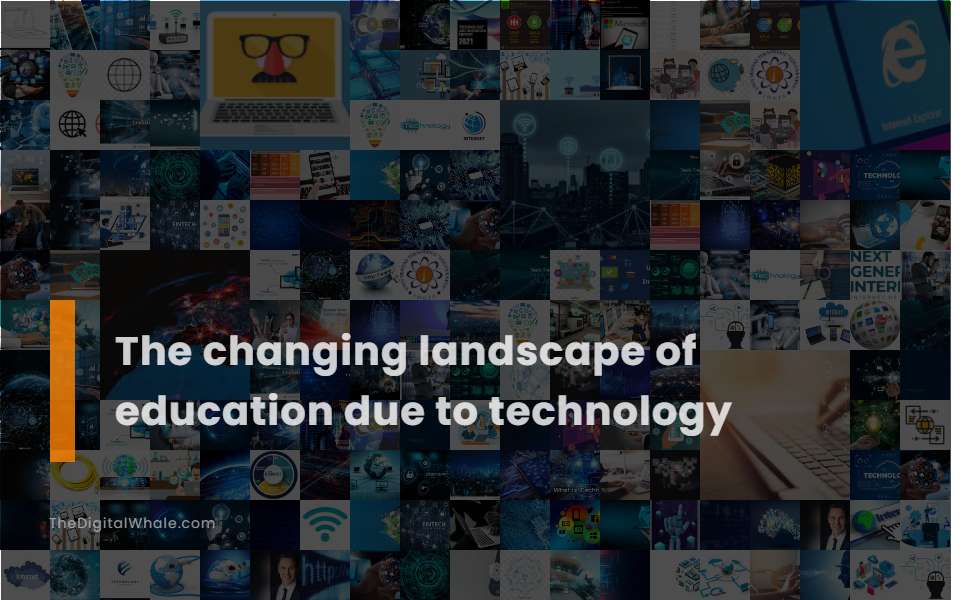The Changing Landscape of Education Due To Technology
What are the benefits of using technology in education? What are the different types of technology in education that are growing in popularity? Let's find out more about The Changing Landscape of Education Due To Technology.

Enhanced Accessibility: Technology expands access to educational resources and information beyond traditional textbooks and classrooms.
Technology has significantly enhanced accessibility in education by breaking down geographical and socio-economic barriers and providing affordable subscription models for advanced tech. Through assistive technologies, it supports students with disabilities, ensuring all learners can benefit from modern learning tools. The impact of technology on education is profound, expanding access to educational resources and providing students with unprecedented opportunities for personalized and self-directed learning. By overcoming geographical barriers, digital learning tools offer access to a vast repository of information, transforming how students engage with educational content. For an in-depth exploration of these advancements, visit Eschool News.
Personalized Learning: Adaptive learning platforms and educational apps tailor instruction to individual student needs and learning styles.
Technology in education is transforming the landscape through personalized learning, utilizing adaptive learning platforms and educational apps that tailor instruction to individual students' needs and learning styles. These innovations leverage data analytics and AI to provide customized learning experiences and enhance student engagement and outcomes. For more insights on how technology supports this transformation, you can explore the article on EdTech Magazine, which discusses the pivotal role of these tools in K-12 schools.
Interactive and Engaging Learning: Integration of technology makes learning more interactive through virtual simulations, educational games, and multimedia presentations.
Technology in education has transformed learning into an interactive and engaging experience through the integration of virtual simulations, educational games, and multimedia presentations. These advancements have greatly enhanced student engagement, motivation, and knowledge retention by providing dynamic and approachable learning environments. For further insights on how technology aids in student learning, you can explore the comprehensive analysis provided by ProctorEdu, where they delve into the nuances of educational technology's impact on modern education.
Global Connectivity: Technology fosters global collaboration within the classroom through virtual projects and discussions.
Technology fosters global connectivity within the classroom through virtual collaboration for online projects and discussions. This advancement enables students to work together and share ideas across different locations. For further insights on how technology is transforming the educational landscape, visit Eschool News, which delves into the impact of technological innovations on education.
Efficiency in Administration: Digital platforms streamline administrative tasks such as enrollment, grading, and communication.
Technology in education has significantly enhanced administrative efficiency by streamlining tasks such as enrollment, grading, and communication through digital workflows, cloud-based systems, and automated processes. This transformation has reduced errors and freed up staff to focus on strategic priorities. The integration of technology in educational administration has converted labor-intensive tasks, like student enrollment and attendance tracking, into efficient, automated processes. Utilizing tools such as Cloud-Based Student Information Systems and Learning Management Systems, institutions have optimized their administrative workflows, ensuring a more impactful and streamlined educational experience for both staff and students.
Related:
have you ever felt anxious or depressed after using social media? What are the implications of technology on mental health? Let's find out more about The Impact of Technology On Teenage Social Lives.
Skill Development for the Digital Age: Technology prepares students with essential skills like digital literacy, critical thinking, and problem-solving.
Technology in education prepares students for the digital age by developing essential skills such as digital literacy, critical thinking, and problem-solving, which are crucial for success in a technology-driven society and workforce. These skills include navigating the digital world, analyzing and evaluating digital content, and collaborating effectively online. To explore the full impact of this transformation, visit The Impact of Technology on Education for more insights.
Flexibility in Learning: Mobile learning and microlearning allow students to access educational content anytime, anywhere.
Mobile learning and microlearning offer flexibility in education by providing anytime, anywhere access to learning resources, allowing students to learn at their own pace and integrate education into their daily routines, whether at home, on the go, or in transit. By harnessing the power of [Education At Your Fingertips](https://skilharvest.com/mobile-learning-the-power-of-education-at-your-fingertips/), learners can effortlessly access educational content on various devices, choose their learning pace, and consume content in flexible, bite-sized nuggets, making learning a continuous and personalized experience.
Customized Assessments: Technology enables innovative assessment methods including online quizzes, interactive assignments, and digital portfolios.
Technology has revolutionized assessments, enabling personalized, data-driven evaluations that cater to individual learning needs by utilizing AI and ML to create unique and flexible assessments. This advancement provides real-time feedback to enhance student engagement and academic performance. In the realm of modern education, Digital Assessments offer flexibility, scalability, and real-time feedback, allowing for personalized learning paths and automated grading. Moreover, the integration of interactive elements helps to enhance student engagement and reduce learning gaps, thereby driving educator empowerment and improving student outcomes.
Collaborative Learning: Digital platforms facilitate collaborative learning experiences through online forums and real-time collaboration tools.
Digital platforms and tools, such as Google Classroom, Microsoft Teams, and interactive tools like Flipgrid and Pear Deck, facilitate collaborative learning by enabling students to work together on shared documents, participate in virtual discussions, and engage in peer-to-peer learning, thus enhancing teamwork, communication, and social skills. The impact of technology on education enables collaborative learning through online platforms, allowing students to work on projects, share ideas, and participate in virtual discussions, whether in fully online, hybrid, or traditional classroom settings, promoting teamwork, communication, and digital literacy. For more insights, you can explore the technology in education article on eSchool News.
Access to Information: The internet provides students and educators with unprecedented access to a vast repository of knowledge and educational resources.
The Internet has revolutionized education by providing unprecedented access to a vast repository of knowledge, including scholarly papers, eBooks, and online courses, allowing students to explore subjects beyond traditional curricula and enhancing their research capabilities.
Related:
What are some disadvantages to technology use that may result in negative symptoms? What are the pros and cons of using technology in adolescence? Let's find out more about The Pros and Cons of Teenage Use of Technology.
